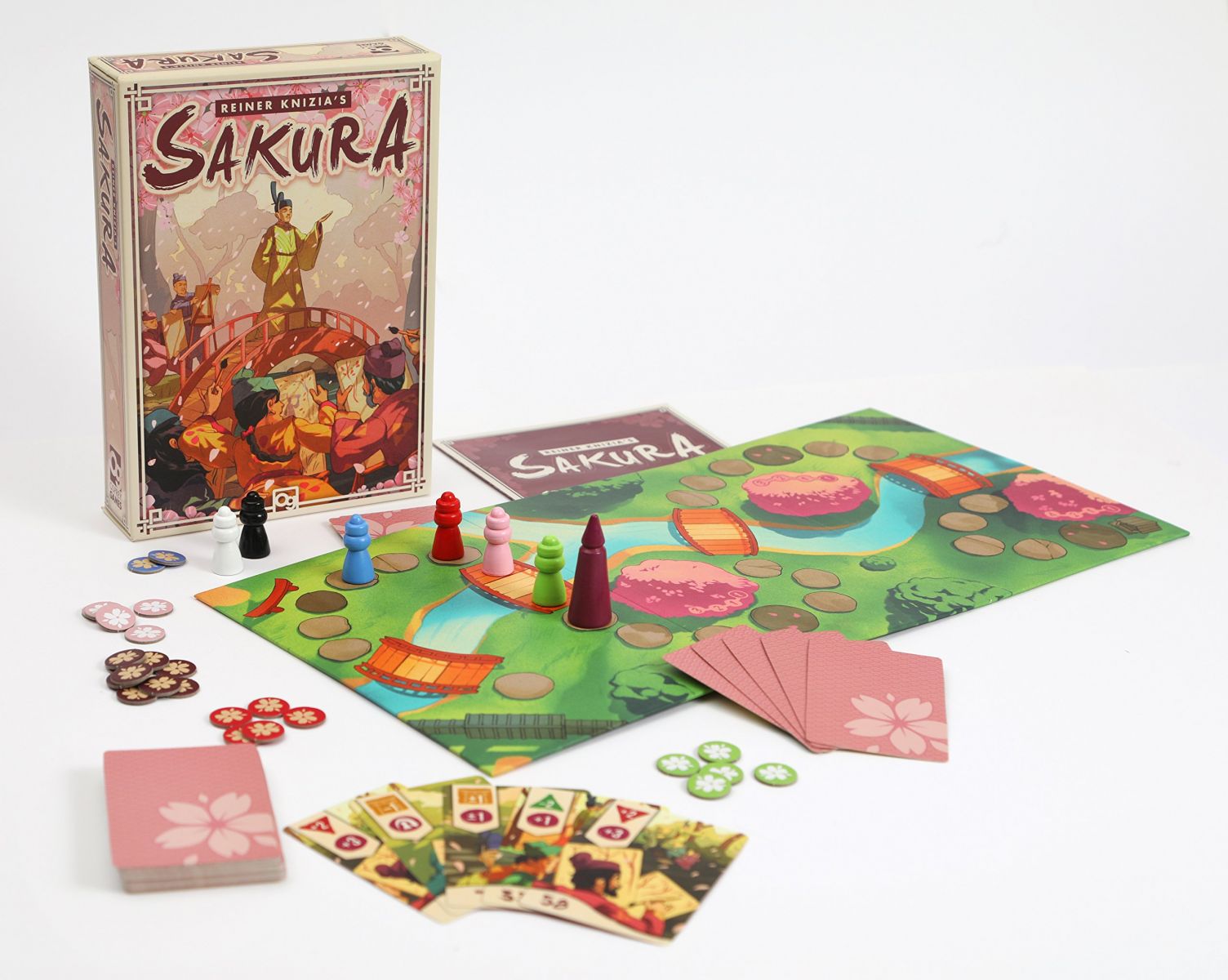Sakura Review: Push Your Luck Artistry

Players are artists trying to capture the loveliest painting of the emperor by staying close on his heels. Jockey with your fellow artists for a prime position, but don’t bump into the emperor as he takes his walk.
We’ve enjoyed a number of Osprey Games in the past. How does this new addition to their catalog hold up?
Gameplay
Each player is an artist trying to keep close to the emperor as he progresses along the board. Everyone has a hand of five cards. Every round, players play a card simultaneously and refill their hand to five. Every card contains a number and two actions. The number dictates when the card will be resolved (cards are resolved from lowest number to highest each round). One of the actions will move someone on the board, and the second action will move the person who played the card.
When moving someone on the board, the card will often move the emperor’s pawn either forward on the board or back a certain number of spaces. It will also sometimes move the player closest to the emperor back two spaces or the player farthest from the emperor forward two spaces. When moving your own pawn, the card will sometimes move you forward one to three spaces or allow you to choose whether to move forward or back one to three spaces. You might move forward a number of spaces equal to the players ahead of you on the board, or move to the first empty space ahead of the closest player.
When moving your pawn on the board and calculating spaces, you only count empty spaces, skipping over spaces containing other players' pawns. If either your card or another player’s card causes you to bump into the emperor’s pawn, you lose a favor token and are moved back three spaces.
There are three spots on the board where, once the emperor reaches it, he stops moving for the rest of the round. The player whose card caused him to reach that spot finishes her movement and then all cards not yet resolved that round are discarded. Players then earn favor tokens based on how close they are to the emperor. The closer you are, the more tokens you will earn.
Once the emperor reaches the end of the board and the final favor tokens are handed out, the game ends and the player with the most favor tokens wins the game.

Review
Sakura is a nice, pleasant, push your luck game. There’s a lot of enjoyable player interaction — and that moment when everyone reveals their cards and you see if your gambles paid off, is a lot of fun. There are a lot of factors to consider when choosing a card, from when it’s likely to be resolved to what other players may or may not do. As the emperor nears the three scoring spaces, that intensity grows, since you risk having your card discarded if the emperor reaches the space before your card resolves.
It is quite a light game. You have the information on the board but there’s such a wide range of cards in the deck, there’s no way to guess what other people are holding. In general, it doesn’t add anything particularly new to the genre.
Osprey Games is like Gamewright Games: you always know the final product is going to look gorgeous with high quality components that are a delight to play with. Sakura is no exception. The artwork is lovely, the components are nice and solid, and the cards are sturdy and should hold up well under a lot of shuffling.
If you enjoy push your luck mechanics, Sakura is a nice, unassuming, addition to the genre. It looks lovely, is light on rules, and has some enjoyable player interaction.
Pros: Good component quality, enjoyable player interaction
Cons: Gameplay can be unpredictable
Disclosure: we received a complimentary review copy of this game.







